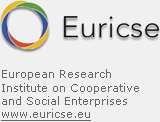We investigate the effects of civic norms and associational networks on crime rates. Civic norms may attach guilt and shame to criminal behavior, thus increasing its opportunity cost. Associational networks may increase returns to noncriminal activities and raise detection probabilities, but they may also work as communication channels for criminals and may offer official cover to criminal activities. The empirical assessment of these effects poses serious problems of endogeneity, omitted variables, measurement error, and spatial correlation. Italy’s great variance in social and economic characteristics, its homogeneity in policies and institutions, and the availability of historical data on social capital in its regions allow us to minimize the first two problems. To tackle the last two problems, we use report-rate-adjusted crime rates and estimate a spatial lag model. We find that both civic norms and associational networks have a negative and significant effect on property crimes across Italian provinces.
Buonanno, P., Montolio, D., Vanin, P. (2009). Does social capital reduce crime? Journal of Law and Economics 52(1), 145-170








